 |
 |
 |
| |
Aging with HIV in Latin America
and The Caribbean: a systematic review
|
| |
| |
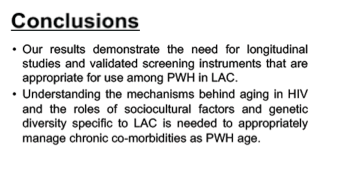
Aging & HIV Workshop 2020 Aug 29-Oct 2 virtual
Reported by Jules Levin
Diego M. Cabrera, MD1,2; Monica M. Diaz, MD2,3; Alyssa Grimshaw, MSLIS1; Justina Salvatierra, MSLIS2; Patricia J. Garcia, MD, MPH, PhD2; Evelyn Hsieh, MD, PhD1
Yale School of Medicine, New Haven, CT, USA1; Universidad Peruana Cayetano Heredia, Lima, Peru2; University of California, San Diego, San Diego, CA, USA3
ABSTRACT
Background: With the establishment of antiretroviral treatment (ART) programs in low- and middle-income countries, people living with HIV (PWH) in Latin America and the Caribbean (LAC) are living longer, subsequently developing chronic non-communicable co-morbidities. Few studies focus on the impact of aging among older LAC PWH. This systematic review aims to fill the information gap to understand the burden of aging with HIV in LAC.
Methods: We identified peer-reviewed literature published in English, Spanish or Portuguese from several databases (from inception of database to March 13, 2020) using a combination of controlled vocabulary to identify papers regarding HIV co-morbidities in LAC. The search was not limited by publication type or year. The inclusion criteria were: study population from LAC, plus population aged 40 or older, or report of age-related findings among publications that stratified their cohorts into age groups, and at least one HIV-related chronic comorbidity (cardiovascular disease, renal disease, neurological and psychiatric disease, musculoskeletal disorders, and non-AIDS related malignancies [NADM]).
Results: Of the 5,942 manuscripts reviewed, only 53 articles were found with populations age≥40 or age-related findings (27 CVD, 10 neurological or psychiatric illness [including HIV-associated neurocognitive disorder {NCI} and depression], nine musculoskeletal disorders [including osteoporosis], four renal disease, three NADM). The large majority of publications (79%) were from Brazil with the rest from Argentina, Chile, Colombia, Ecuador, Mexico and Peru. Eleven studies on dyslipidemia were included; age≥40 was a risk factor for dyslipidemia in eight studies, but two studies found no relationship between age and dyslipidemia. Five studies were included on metabolic syndrome and five studies on hypertension; the prevalence of each varied widely within each country. Eight manuscripts were included that described NCI prevalence and risk factors (seven from Brazil [prevalence from 23% to 54%], one Mexico [prevalence 66%]) with age being a significant risk factor for NCI. We included four manuscripts on depression among PWH age≥50 (three from Brazil [prevalence 21% to 35%], one from Mexico [prevalence 16%]), with risk factors for depression including female sex, lower CD4, smoking, frailty. Of six studies on bone health, four reported on bone mineral disease (BMD) using DXA scan and only one study reported on sarcopenia. All studies found age≥50 was a risk factor for low BMD, and other risk factors included smoking, reduced physical activity, low body mass index and menopause. Four papers explored age-related renal abnormalities, all from Brazil, reporting older age was associated with lower Glomerular Filtration Rates across all studies. Finally, 3 articles reported on NADM in older PWH in LAC, and found breast cancer developed at younger ages among PWH compared with an age-matched general population, and cervical cancer rates were not higher in older women with HIV compared with controls in Brazil.
Conclusion: More studies are needed across LAC, particularly from the Caribbean where we found no studies, focused on co-morbidities of older PWH. Understanding the mechanism of aging in HIV, and the role of sociocultural factors and genetic diversity specific to LAC is key to managing chronic co-morbidities as PWH age.
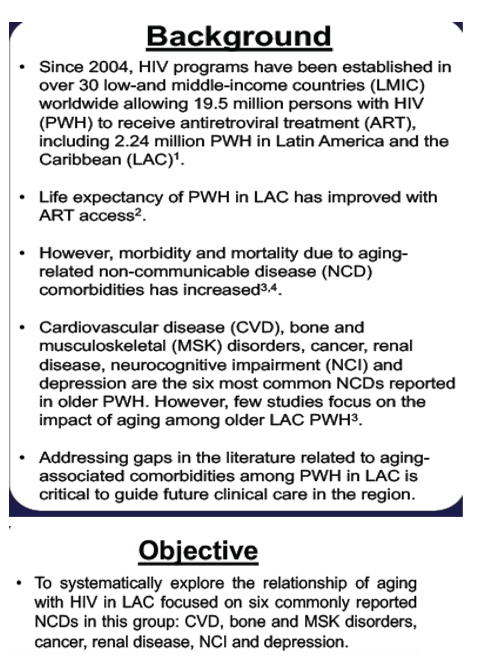
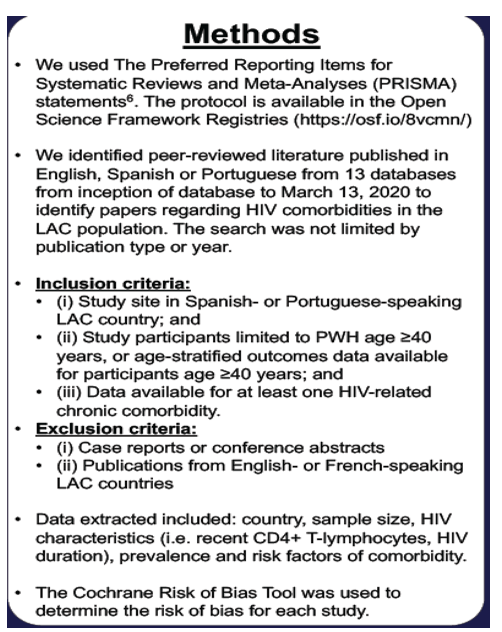
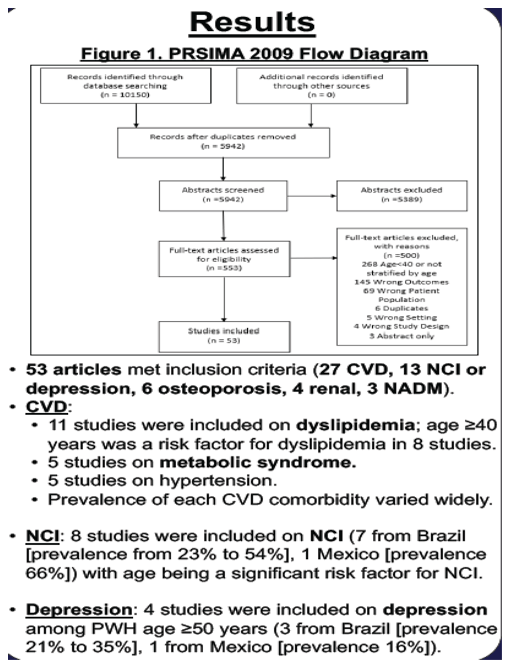
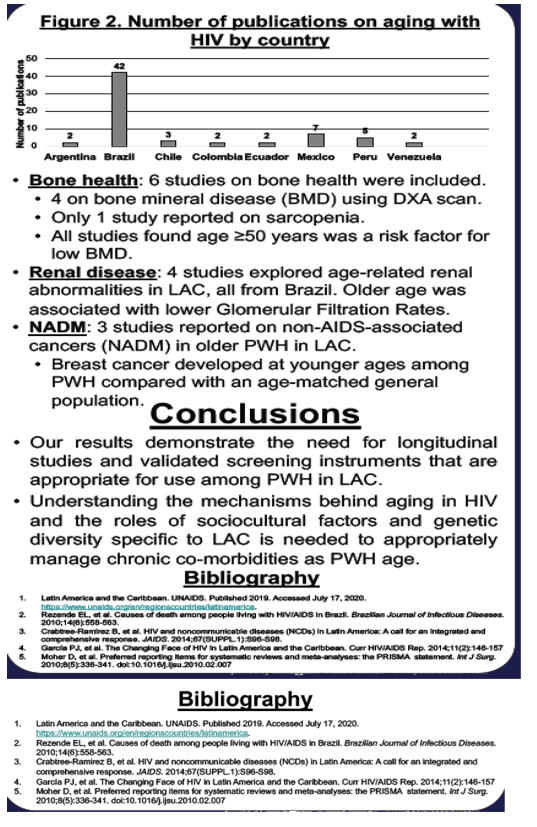
|
| |
|
 |
 |
|
|